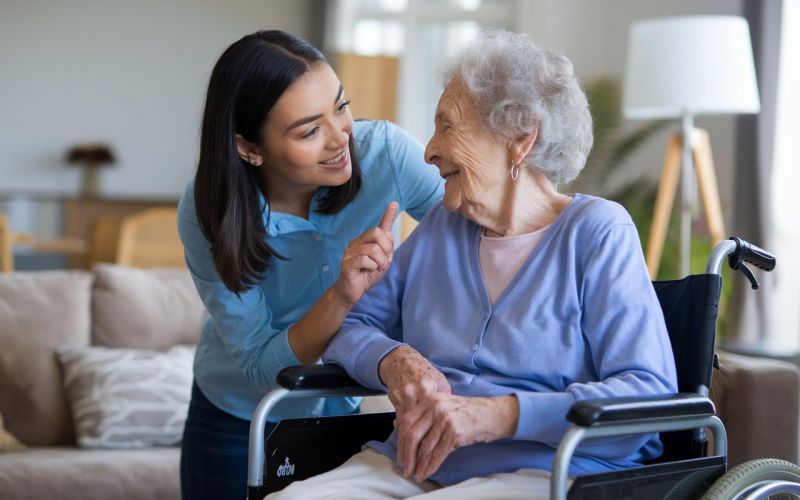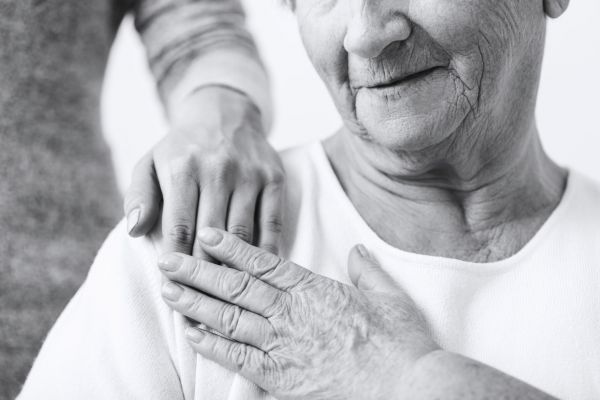Effective Communication Techniques for Caregivers: Connecting with Non-Verbal Patients
iSavta | 23.02.2025

Caring for a patient who cannot speak can be challenging, but communication is still possible. Whether your patient has had a stroke, has advanced dementia, or has a condition that affects speech, there are many ways to connect and understand their needs. As a caregiver, learning how to communicate effectively with non-verbal patients can improve their comfort and well-being. Here are some simple techniques to help you.
1. Observe Body Language and Facial Expressions
Even if a patient cannot speak, their body movements and facial expressions can tell you a lot about how they feel. Pay close attention to their eyes, mouth, and gestures. A smile may mean they are comfortable, while a frown or a wince may show pain or discomfort. If they turn away or close their eyes, they might be tired or not in the mood for interaction.
2. Use Gestures and Simple Signs
Hand signals and basic sign language can be helpful for non-verbal communication. For example, pointing to objects or making a thumbs-up or thumbs-down sign can express choices or feelings. If your patient is capable, you can teach them simple hand signs for basic needs like food, water, pain, or rest.
3. Provide Picture Boards or Communication Cards
A communication board with pictures of common needs (such as food, water, toilet, or medicine) can help patients express themselves. You can also use printed cards with simple words or images that they can point to when they need something. This method is especially useful for patients who can move their hands but cannot speak.
4. Speak Clearly and Calmly
Even though your patient cannot talk, they may still understand what you say. Speak in a gentle, clear, and slow manner. Use short and simple sentences. Give them time to process what you are saying and respond in their own way.
5. Establish a Yes/No Communication System
For patients who can blink, nod, or squeeze your hand, establish a yes/no system. Ask simple yes-or-no questions like, "Are you in pain?" or "Do you need water?" Then, agree with them on how they will respond—such as blinking once for "yes" and twice for "no."
6. Use Touch for Reassurance
A gentle touch on the hand or shoulder can be comforting and reassuring. Physical touch can help non-verbal patients feel cared for and understood. However, always check their body language to ensure they are comfortable with touch.
7. Be Patient and Give Them Time
Non-verbal patients may take longer to express their needs. Be patient and avoid rushing them. Encourage them to communicate in a way that works best for them. If they seem frustrated, reassure them that you are there to help.
8. Play Soothing Music or Use Sounds
Music can be a great way to communicate emotions and create a calming atmosphere. Play their favorite songs or soothing music to help them feel relaxed. Sometimes, patients may react positively to familiar sounds, such as the voice of a loved one or the sound of nature.
9. Use Writing Tools or Digital Devices
If your patient can write, provide them with a notepad or a small whiteboard where they can write or draw their needs. There are also mobile apps and speech-generating devices that can help non-verbal individuals communicate.
10. Involve Family Members and Loved Ones
Family members often know the patient best and can provide insight into how they communicate. Ask them about the patient’s preferences, favorite words, or specific ways they express themselves. This can help you establish a better way to interact with the patient.
Conclusion
Communication is not just about words—it is about understanding and connection. As a caregiver, your patience, attentiveness, and creativity can make a big difference in a non-verbal patient’s life. By using these techniques, you can help them feel heard, understood, and cared for, even without spoken words. Every small effort counts in making their daily life more comfortable and meaningful.












